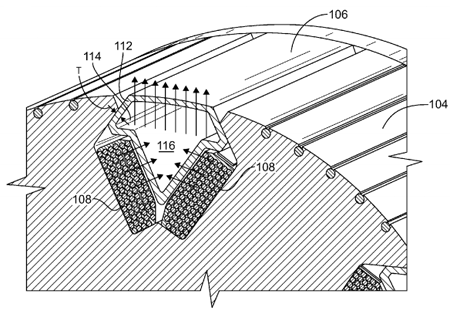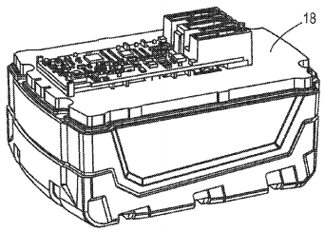 The Phase Change Matters e-mail newsletter is a weekly summary of the latest news and research on phase change materials and thermal energy storage. To subscribe, visit www.puretemp.com/subscribe. For more frequent updates, follow @puretemp on Twitter or visit the Phase Change Matters blog, www.puretemp.com/pcmatters.
The Phase Change Matters e-mail newsletter is a weekly summary of the latest news and research on phase change materials and thermal energy storage. To subscribe, visit www.puretemp.com/subscribe. For more frequent updates, follow @puretemp on Twitter or visit the Phase Change Matters blog, www.puretemp.com/pcmatters.
AGRICULTURE
Thermal energy storage is at the heart of net-zero milking system
Dairy farms consume a surprising amount of energy. Electricity is needed to run milking machines, to heat water to clean the equipment and to cool milk to safe temperatures for storage and consumption.
The West Central Research and Outreach Center in Morris, Minn., is developing a dairy system that collects more energy from renewable sources than it uses. The key components: two wind turbines, a solar thermal array, a heat pump, three heat exchangers and a 2,000-gallon water tank. The Morris Sun Tribune describes the system:
 “The central component of the new net-zero dairy will be a heat pump designed to collect the heat from the cow’s milk and store it in a 2,000 gallon thermal storage tank custom built by Custom Fabrication and Repair of Morris.
“The central component of the new net-zero dairy will be a heat pump designed to collect the heat from the cow’s milk and store it in a 2,000 gallon thermal storage tank custom built by Custom Fabrication and Repair of Morris.
“Water will also be heated using solar thermal collectors already built along the east side of the dairy barn, adding another source for preheated water. This reduces the amount of energy needed to warm the water to the necessary temperature.
They’ve also installed three heat exchangers — devices that transfer heat between a warm substance and a cold substance — that will be used to chill the milk and help move heat into and out of the thermal storage unit. From the storage unit, the water will flow through an electric, tankless water heater system to get up to the final temperature needed for cleaning.”
In an interview with Phase Change Matters, renewable energy scientist Eric Buchanan shared more details on the tank: “The tank is partitioned into three sections in such a way to promote temperature stratification. The inlets and outlets on the cold and hot sides of the tank also incorporate radial diffusers designed to slow the flow and minimize vertical mixing. The tank will be insulated with spray foam to about R-80.”
PHASE CHANGE MATERIALS
Agenda set for RAL Quality Association PCM meeting in March
Members of the RAL Quality Association PCM, a European-based organization established in 2004 to develop standards for the phase change material industry, will meet in Düsseldorf, Germany, on March 1. Entropy Solutions, the group’s newest member company, will be represented by Dr. William Sutterlin, chief science officer. Representatives of eight other companies have confirmed they will attend:
• BASF SE
• Croda Europe Ltd.
• Emco Bau- und Klimatechnik GmbH & Co. KG
• PCM Technology
• Rubitherm Technologies GmbH
• Sasol Germany GmbH
• w&a wärme- und anwendungstechnische Prüfungen (external test lab)
• ZAE Bayern (external test lab)
The agenda includes discussions of PCM testing specifications, the European Parliament’s directive on the energy performance of buildings and an initiative to add phase change material to government-defined calculations of building efficiency.
CONFERENCES
46 papers presented at Innostorage PCM/TES conference in Israel
The 2016 Innostorage conference took place at the Ben-Gurion University of the Negev in Israel this week. Innostorage is an international research project aimed at developing efficient thermal energy storage systems using low-cost phase change materials. Forty-six papers were presented, including:
• A review of the connection between material property and performance of PCM in real scale applications (Harald Mehling, Camila Barreneche, Aran Solé, Luisa F. Cabeza)
• Implementation and comparison of three enthalpy methods for modelling solid-liquid phase change in OpenFOAM (Andreas König-Haagen, Erwin Franquet, Eric Pernot, Dieter Brüggemann)
• One-dimensional analytical model of PCM melting (Vadim Dubovsky, Gennady Ziskind, Ruth Letan)
• Fast thermal energy storage using open-cell aluminum foam (Henk Huisseune, Ben D’Haeger, Michel De Paepe)
• Novel microencapsulated phase change material for thermal energy storage in building applications (Halime Paksoy, Beyza Beyhan, Kemal Cellat)
• Design evaluation and improvements of a latent heat based thermal energy storage system (Pepe Tan, Pär Johansson, Angela Sasic Kalagasidis)
• Acceptable and realised storage capacity costs of thermal energy storages (Christoph Rathgeber, Stefan Hiebler, Eberhard Lävemann, Andreas Hauer)
PATENTS
Thermally conductive rotor wedge with PCM

U.S. patent application 20160043613 (applicant UTC Aerospace Systems, Charlotte, N.C.):
“A wedge for an electrical machine core includes a hollow wedge body including a wedge wall extending in an axial direction. The wedge wall separates an interior hollow space of the wedge body from a space exterior to the wedge body. A phase change material [116, right] can be housed within the interior hollow space of the wedge for regulating heat transfer through the wedge. An electrical machine includes a wound rotor including an electrical steel core and a plurality of wedges mounted to the electrical steel core with electrical machine windings retained between each wedge and the core body. Each of the wedges includes a hollow wedge body as described above.”
Battery pack with phase change material
U.S. patent application 20160043453 (applicant Milwaukee Tool Corp., Brookfield, Wis.):
 “A battery pack may include a housing; at least one battery cell supported in the housing; a phase change material; and a bladder containing the phase change material [18, right], the bladder defining a channel having an opening, the bladder being in a heat transfer relationship with the at least one battery cell. The phase change material in the bladder may also surround a portion of the channel. The phase change material may include a paraffin wax.”
“A battery pack may include a housing; at least one battery cell supported in the housing; a phase change material; and a bladder containing the phase change material [18, right], the bladder defining a channel having an opening, the bladder being in a heat transfer relationship with the at least one battery cell. The phase change material in the bladder may also surround a portion of the channel. The phase change material may include a paraffin wax.”
IN BRIEF
• The American Chemistry Council has launched BuildingWithChemistry.org to provide architects, material specifiers, interior designers and others with tools and information about green building codes, standards and material selection.
• A new report projects strong growth for the green building market globally, but finds that the United States lags in measuring the benefits. “World Green Building Trends 2016,” produced by Dodge Data & Analytics with support from United Technologies Corp., the U.S. Green Building Council and others, is based on a 2015 survey of more than 1,000 architects, engineers, contractors, owners and consultants from 69 countries.
• The agenda for the 14th GDP & Temperature Management Logistics Summit – Canada, Feb. 29-March 3 in Toronto, is available for download at www.coldchainpharm.com/media/9354/9354_Brochure.pdf. Sonoco ThermoSafe, va-Q-tec, Pelican BioThermal and Cryopak are among the sponsors. [pdf]
• A new study by the Brattle Group makes the case for tapping the thermal energy of electric water heaters in more than 50 million U.S. homes. The use of water heaters as thermal batteries could save consumers money, reduce carbon dioxide emissions, better manage electricity from renewable sources and help grid operators regulate voltage and frequency. [pdf]
• PureTemp phase change material, made by Entropy Solutions, has been selected for display at matériO showrooms in Paris, Seoul and Shanghai. The materials library, based in France, lists more than 7,400 “cutting edge” materials and technologies in its database. The Seoul and Shanghai showrooms are scheduled to open in June.
• Canada’s Drake Landing, a large-scale solar community that uses borehole thermal energy storage to heat 52 single-family homes, has achieved up to 98 percent efficiency in recent years. The district heating system, now in its ninth year, combines garage-mounted solar panels with 144 boreholes, drilled 37 meters deep.
• The Masdar Institute has initiated its concentrated solar power on demand demonstration project in Abu Dhabi. The aim is to show that the novel single-tank thermal energy storage system, which absorbs and stores thermal energy using molten salt, may prove to be more affordable and efficient than conventional two-tank systems.
• AkzoNobel‘s purchase of BASF‘s industrial coatings business could put other chemical companies under pressure to re-structure their businesses, analysts say. Cheap oil means more cash is available for mergers and acquisitions.
• The team behind TheM, a PCM-powered thermal dining placemat, fell short of its goal of raising $30,000 on Indiegogo last fall. But the team is still plugging away on prototypes and hopes to develop a successful design by the end of February.
• Ben-Gurion University of the Negev hosted the second board meeting of the European project INPATH-TES this week. Thirty-some researchers from different countries participated in the meeting, representing the 22 partners in the project.
• Researchers at Johns Hopkins Bloomberg School of Public Health have created a safety database on 10,000 chemicals registered in Europe for predicting the toxicity of many of the 90,000 or more other substances in consumer products.
RESEARCH ROUNDUP
For our full list of recent academic research, see puretemp.com/academic. Here are highlights from the past week:
From Building and Environment:• Hybrid cooling clothing to improve thermal comfort of office workers in a hot indoor environment
From Applied Thermal Engineering:
• Performance modeling and parametric study of a stratified water thermal storage tank
• Preparation and thermal characteristics of eutectic fatty acids/shorea javanica composite for thermal energy storage
• Fabrication and characterization of nanofiber-nanoparticle-composites with phase change materials by electrospinning
• Thermal properties and heat storage analysis of palmitic acid-TiO2 composite as nano-enhanced organic phase change material (NEOPCM)
From Chemistry: A European Journal:
• Confined-Volume Effect on the Thermal Properties of Encapsulated Phase Change Materials for Thermal Energy Storage
From RSC Advances:
• Novel Wearable Polyacrylonitrile/Phase-change Materials Sheath/Core Nano-fibers Fabricated by Coaxial Electro-spinning
From Applied Energy:
• Experimental investigations on prototype heat storage units utilizing stable supercooling of sodium acetate trihydrate mixtures
• Experimental demonstration of an active latent heat storage concept
• Stable, low-cost phase change material for building applications: The eutectic mixture of decanoic acid and tetradecanoic acid
From Renewable and Sustainable Energy Reviews:
• Latent heat storage in building elements: A systematic review on properties and contextual performance factors
From Materials Letters:
• Preparation and thermal properties of cross-linked poly(acrylonitrile-co-itaconate)/polyethylene glycol as novel form-stable phase change material for thermal energy storage
NETWORKING
Connect with PCM experts and industry leaders on LinkedIn
More than 600 of your peers have joined a LinkedIn group devoted to the discussion of phase change material and thermal energy storage. The Phase Change Matters group is an interactive complement to the award-winning blog and newsletter of the same name.
You are invited to join the group and connect with PCM and TES experts from around the world. New members include Luigia Longo, chemistry and regulatory specialist at CETMA, Italy; Paul Bourhis, project engineer at Hutchinson, France; Markus Hoffmann, business unit manager at TNT Express, Germany; and Ani Abraham, Ph.D. candidate in chemical engineering, New Jersey Institute of Technology. Ani writes:
“We are currently seeking opportunities to collaborate with industrial partners and academic partners on the advancement of oxide-encapsulated materials. Please let us know if you are interested in such materials.”
http://www.sciencedirect.com/science/article/pii/S1359645416300726
YOUR TURN
Got a question about PCMs or TES? Ask our experts
Two Entropy Solutions advisors, Dr. Mohammed Farid of the University of Auckland and Lucas B. Hyman of Goss Engineering, are ready to answer your questions about phase change material and thermal energy storage. We’ll select the best questions sent to bwelter@puretemp.com and post the answers here each Friday.